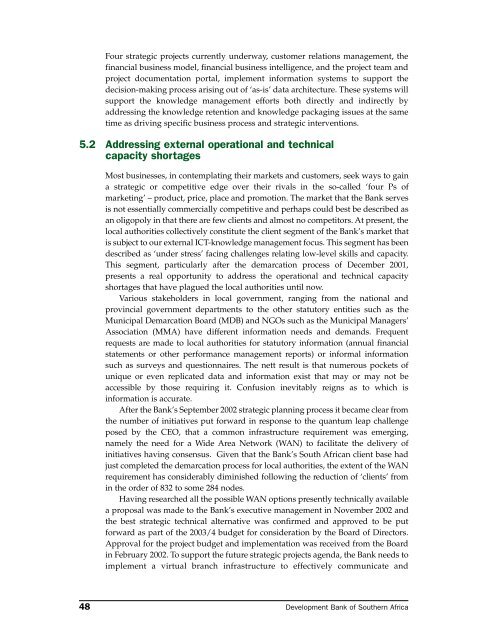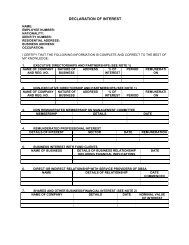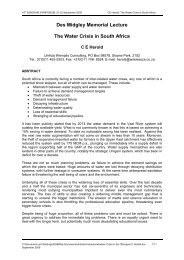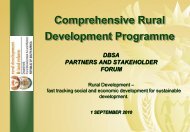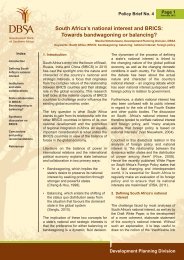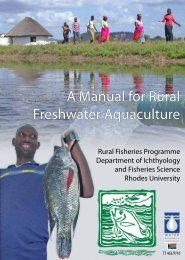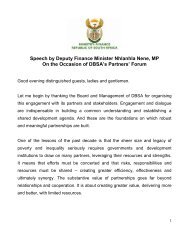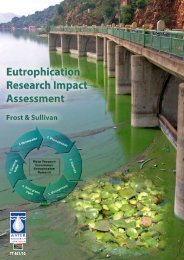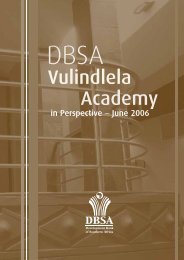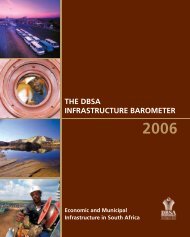A Knowledge Strategy
A Knowledge Strategy
A Knowledge Strategy
You also want an ePaper? Increase the reach of your titles
YUMPU automatically turns print PDFs into web optimized ePapers that Google loves.
Four strategic projects currently underway, customer relations management, the<br />
financial business model, financial business intelligence, and the project team and<br />
project documentation portal, implement information systems to support the<br />
decision-making process arising out of ‘as-is’ data architecture. These systems will<br />
support the knowledge management efforts both directly and indirectly by<br />
addressing the knowledge retention and knowledge packaging issues at the same<br />
time as driving specific business process and strategic interventions.<br />
5.2 Addressing external operational and technical<br />
capacity shortages<br />
Most businesses, in contemplating their markets and customers, seek ways to gain<br />
a strategic or competitive edge over their rivals in the so-called ‘four Ps of<br />
marketing’ – product, price, place and promotion. The market that the Bank serves<br />
is not essentially commercially competitive and perhaps could best be described as<br />
an oligopoly in that there are few clients and almost no competitors. At present, the<br />
local authorities collectively constitute the client segment of the Bank’s market that<br />
is subject to our external ICT-knowledge management focus. This segment has been<br />
described as ‘under stress’ facing challenges relating low-level skills and capacity.<br />
This segment, particularly after the demarcation process of December 2001,<br />
presents a real opportunity to address the operational and technical capacity<br />
shortages that have plagued the local authorities until now.<br />
Various stakeholders in local government, ranging from the national and<br />
provincial government departments to the other statutory entities such as the<br />
Municipal Demarcation Board (MDB) and NGOs such as the Municipal Managers’<br />
Association (MMA) have different information needs and demands. Frequent<br />
requests are made to local authorities for statutory information (annual financial<br />
statements or other performance management reports) or informal information<br />
such as surveys and questionnaires. The nett result is that numerous pockets of<br />
unique or even replicated data and information exist that may or may not be<br />
accessible by those requiring it. Confusion inevitably reigns as to which is<br />
information is accurate.<br />
After the Bank’s September 2002 strategic planning process it became clear from<br />
the number of initiatives put forward in response to the quantum leap challenge<br />
posed by the CEO, that a common infrastructure requirement was emerging,<br />
namely the need for a Wide Area Network (WAN) to facilitate the delivery of<br />
initiatives having consensus. Given that the Bank’s South African client base had<br />
just completed the demarcation process for local authorities, the extent of the WAN<br />
requirement has considerably diminished following the reduction of ‘clients’ from<br />
in the order of 832 to some 284 nodes.<br />
Having researched all the possible WAN options presently technically available<br />
a proposal was made to the Bank’s executive management in November 2002 and<br />
the best strategic technical alternative was confirmed and approved to be put<br />
forward as part of the 2003/4 budget for consideration by the Board of Directors.<br />
Approval for the project budget and implementation was received from the Board<br />
in February 2002. To support the future strategic projects agenda, the Bank needs to<br />
implement a virtual branch infrastructure to effectively communicate and<br />
48 Development Bank of Southern Africa


